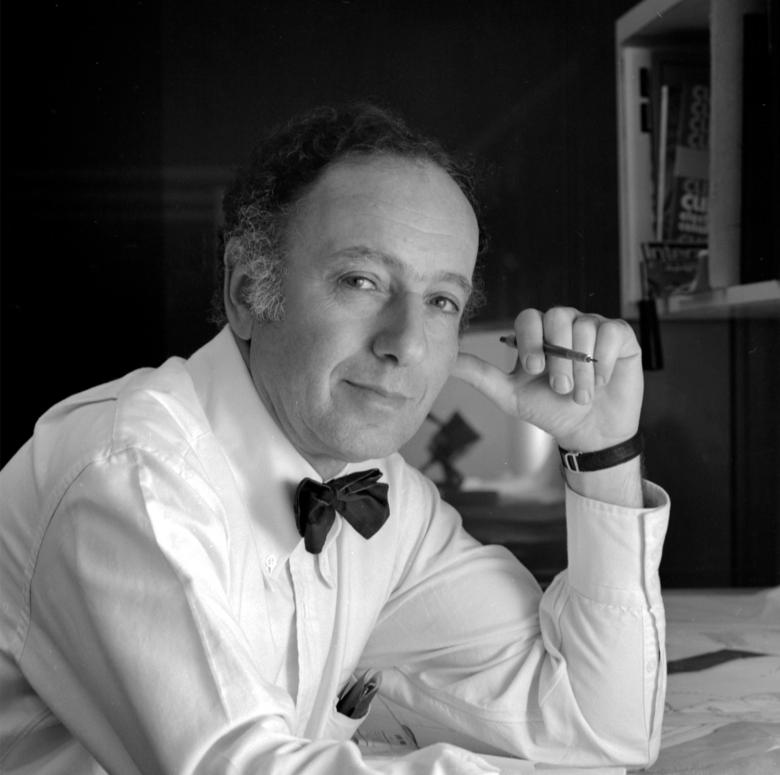Harry Seidler: Painting Toward Architecture
Exhibition at the National University of Singapore
College of Design and Engineering
Department of Architecture
February 16 – March 8, 2023
Lecture by exhibition curator Vladimir Belogolovsky
February 16, 2022; 6:30 pm
Exhibition opening and walkthrough with the curator to follow
“Architecture is and always was above all, an art form; that interdependence exists between all the visual arts… The form that architecture takes should have its roots and marriage with painters and the world of the other visual arts. They are all intertwined, and they all reflect the impetus of our time.” - Harry Seidler
Harry Seidler: Painting Toward Architecture is the final stop of a decade-long traveling exhibition that showed at 32 cities in 20 countries in Europe, North and South America, Asia, and Australia. The show traces the work of Harry Seidler, Australia’s most prominent 20th-century architect, and examines his distinctive place and hand within and beyond the Modernist design methodology. Dozens of featured projects—from single-family houses to multistory residential and office towers, civic, sports, and cultural centers, as well as important government commissions in Australia, Austria, France, Israel, Italy, Mexico, and Hong Kong—bring to focus Seidler’s 12 long-lasting creative collaborations with progressive artistic visionaries: architects Walter Gropius, Marcel Breuer, and Oscar Niemeyer; engineer Pier Luigi Nervi; artists Josef Albers, Alexander Calder, Norman Carlberg, Sol LeWitt, Charles Perry, Frank Stella, and Lin Utzon; and photographer Max Dupain. The exhibition was developed and designed by Vladimir Belogolovsky, the founder of the New York-based Curatorial Project in collaboration with Penelope Seidler and The Seidler Estate in Sydney.
Harry Seidler (1923-2006) was the first architect to fully express Bauhaus principles in Australia by building his first project for his parents, the Rose Seidler House (1950) in Wahroonga, Sydney. All his life he was, in his own words, “the torchbearer of modern architecture” and a sincere missionary for the cause of modernism and its ideology to make the world a better place. A constellation of Seidler’s emphatic towers in central Sydney—50-story Australia Square (1967), 60-story MLC Centre (1975), 44-story Grosvenor Place (1988), 30-story Capita Centre (1989), 29-story IBM Tower (1991), 43-story Horizon Apartments (1998), and 56-story Cove Apartments (1999)—asserts powerful visual continuity and constitute a rare urban ensemble of a grand vision by a single master. Seidler’s instantly recognizable body of work, marked by a strong sense of geometry, baroque in origin, a feel for robust balanced compositions, a knowledge of structure and materials, and the use of inventive shading devices effectively responding to the intense Australian sun, distinguish him as the most uncompromising and artistic architect in his adopted country, and one of the most persevering and ingenious architects of his time anywhere. His architecture embodies numerous sources and influences that he strategically sought out and refined over the course of his career—confidence, social purpose, and a methodological and collaborative approach to design from Walter Gropius; residential types, the power of concrete, and the warmth of wood from Marcel Breuer; standardized building systems and expressive structural language from Pier Luigi Nervi; sculptural fluidity and lyrical forms from Oscar Niemeyer; and a profound understanding of how our eyes react to visual phenomena from Josef Albers. From the 1970s on, Seidler’s hand became increasingly influenced by modular works of American abstract expressionist painters and sculptors, particularly Norman Carlberg, Charles Perry, and Frank Stella, evolving into a distinctly personal artistic language yet to be recognized by the profession internationally. Seidler’s late work, however free and sculptural, is never arbitrary. His majestic forms were perpetually defined by rational planning, the efficiency of standardized construction, social and environmental considerations, and always aiming to achieve the greatest artistic effect with the least effort.
Vladimir Belogolovsky (b. 1970, Odesa, Ukraine) is an American curator and critic. Educated both in Ukraine and the U.S. he graduated from The Cooper Union School of Architecture in 1996 and since 2010 has been heading his New York-based Curatorial Project, a nonprofit, which focuses on curating and designing architectural exhibitions worldwide. Belogolovsky has interviewed more than 500 international architects and writes for ArchDaily, Arquitectura Viva, AZURE, and STIRworld. His books include Harry Seidler: Lifework, Harry Seidler: The Exhibition, China Dialogues, Imagine Buildings Floating Like Clouds, Architectural Guides New York and Chicago, Conversations with Architects, and Soviet Modernism: 1955-1985. He has curated and produced over 50 international exhibitions. In addition to his decade-long Seidler tour, he curated the Architects’ Voices Series, Emilio Ambasz retrospective, Green House show at the 2009 Zodchestvo International Architecture Festival in Moscow, and Chess Game exhibition for the Russian Pavilion at the 2008 11th Venice Architecture Biennale. He taught design studio at Tsinghua University in Beijing in 2018-19 and has lectured at universities and museums in more than 30 countries.

Harry Seidler, 1973 Photo by Max Dupain; © Penelope Seidler
- 时间
- 16 February to 8 March 2023
- 地点
-
National University of Singapore College of Design and Engineering
9 Engineering Drive 1, #07-26 EA
117575 Singapore, Singapore - 主办方
- National University of Singapore
- 链接
- More information